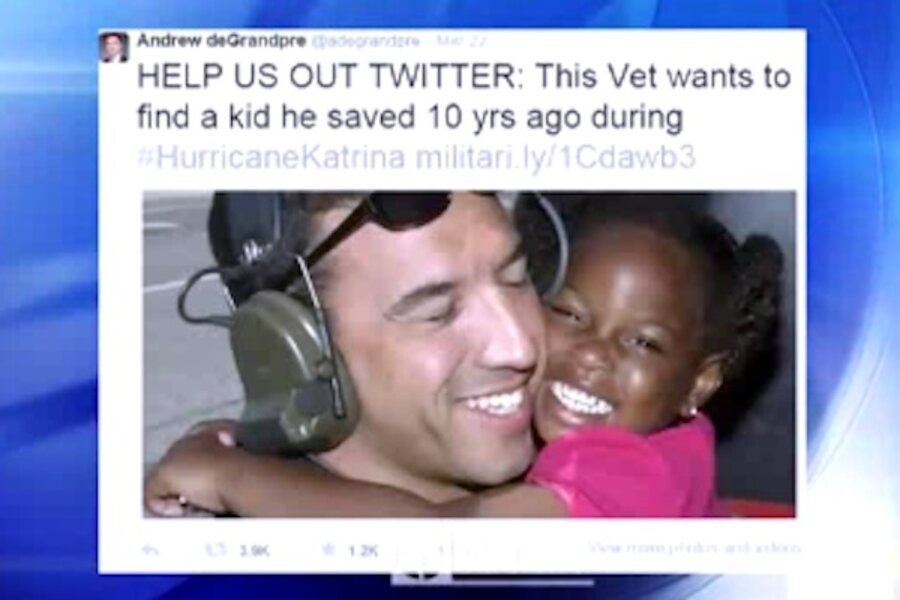Why an Air Force vet started Twitter's trending #FindKatrinaGirl
Loading...
Ten years ago, Master Sgt. Michael Maroney of the US Air Force helped rescue a family of seven in the aftermath of Hurricane Katrina. One member of the family, a little girl in a bright pink shirt with pigtails and a smile the size of Texas, captured his heart.
Now, he is using social media to try to find her and learn the fate of her family.
In 2005, then-Staff Sgt. Maroney served in New Orleans as a pararescueman. He and a team descended onto rooftops in search of people who were injured or stranded in the flooded city. Maroney witnessed the rescues of multiple people who would soon join the ranks of displaced persons in various health conditions. He feared some would not recover.
Then, he encountered the family of the little girl whose photo would eventually go viral. Sgt. Maroney told The Air Force Times that he was never able to forget her smile. Fearlessly, she pointed out her school and home from the ruined city. Not more than five-years-old, she consoled her crying mother to the amazement of the sergeant.
“It’s OK,” the girl said, The Air Force Times reported. “We’re safe. Don’t worry.” Maroney never caught her name.
When the group landed, the family joined other displaced Katrina victims to be transported to various locations across the country. The little girl gave him a hug, a moment of joy preserved forever in a photograph.
Maroney said that not a day has gone by that he has not thought of the girl and her family. About five years ago, he began to search for her, to no avail.
Why has this little girl left such an imprint on the soldier?
Kristin Davis of The Air Force Times wrote:
“To Maroney, she represented everything the residents of this wrecked and waterlogged city would need in the coming months and years: Strength. Resiliency. Kindness.”
In that moment, Maroney said that all of the heartache and wreckage of the disaster melted away and he was left with hope. He told The Air Force Times that he was reminded why he had chosen to become a member of the service’s elite special operations forces at the age of 20, in spite of the burden that comes with the honor.
"If I never do anything else again, that hug and that smile made it all worthwhile," he said.
Both hashtags #FindKatrinaGirl and #FindKatrinaKid have received thousands of responses and shares on Twitter. Maroney, now 40, is closer than ever to locating the girl in the photo, who by now would be a teenager. If anyone has any leads, they are asked to email Air Force Times managing editor Richard Sandza.
“I would love to get another hug and see how she’s doing,” he told The Washington Post. “I’d love her to know that there isn’t a day I haven’t thought of her.”






